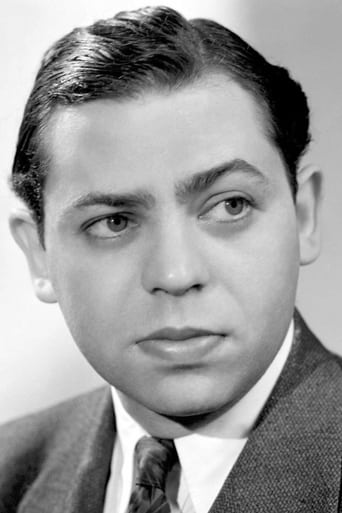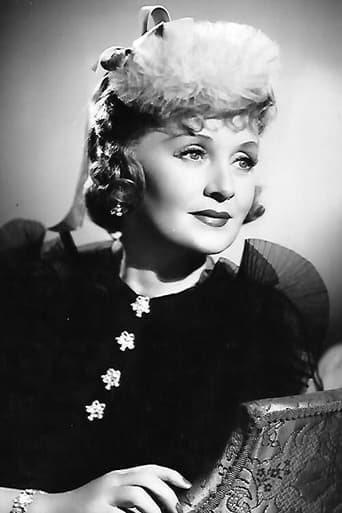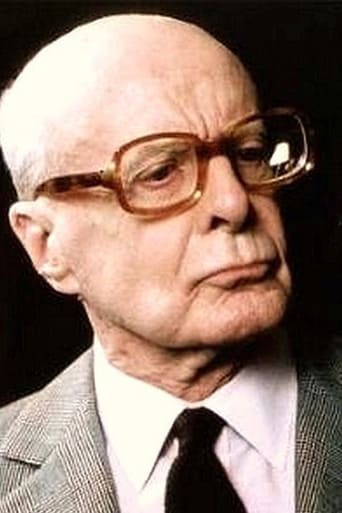Alicia
I love this movie so much
Vashirdfel
Simply A Masterpiece
Invaderbank
The film creates a perfect balance between action and depth of basic needs, in the midst of an infertile atmosphere.
Philippa
All of these films share one commonality, that being a kind of emotional center that humanizes a cast of monsters.
vert001
THE BARKLEYS OF Broadway has a script written by Comden and Green for Astaire and Judy Garland as a followup to EASTER PARADE. The script doesn't seem to have been much changed when Ginger Rogers came on board to replace Judy. Ginger, having signed a contract with a new studio (Enterprise Studios, which to the surprise of the industry wound up making very few movies before going bankrupt) hadn't done much of anything for about 2 years other than reading possible scripts, and was available. Most of the musical numbers would receive a radical makeover, though 'A Weekend in the Country' still seems very much like a stroll down the Yellow Brick Road.At the ages of 38 and 50, Rogers and Astaire serve as the oldest couple that I know of to headline a musical comedy, and it was probably a good idea to make them an established married pair rather than to repeat the courting rituals of the usual (and the usual Astaire/Rogers) musical. Unfortunately, the musical numbers are not especially well-integrated into the plot. Oscar Levant's Tchaikovsky interlude, spectacular as the playing is in itself, does nothing but kill time as we wait for the emotional climax of 'They Can't Take That Away From Me'. Similarly, Astaire's solo with the dancing shoes is impressive, but it stops the plot cold immediately after a dramatic turning point, Dinah's walking out on Josh. These interludes, plus a generally pokey second half, stretch the proceedings out to an uncomfortable length. And there's no ultimate reward for it, as the great 'Let's Face The Music And Dance' had been for the overlong FOLLOW THE FLEET. And most of all, one must wonder at the idea of burying the first dance number beneath the opening credits! Decisions don't get any dumber than that.Whatever the movie may have been like with Judy Garland, it is laden with the mystic chords of memory with Ginger Rogers as one of its stars. For some reason, somebody seems to have had ROBERTA on their minds. The best number in BARKLEYS, 'Bouncing the Blues', sees Fred and Ginger dressed in very similar costumes to those they wore in the great tap dance number 'Hard to Handle' from ROBERTA. Where the earlier number is graced by spontaneous ejaculations from Ginger and Fred, 'Bouncing the Blues' is burdened by forced (recorded) interjections from Fred, and it's no accident that such echoes are on the final sound track. Also, the romantic ballad 'Smoke Gets In Your Eyes' dance ends with Fred taking Ginger's hand as they exit stage right to be met with her loving gaze as prelude to a comedic proposal and acceptance (she proposes, he accepts); in BARKLEYS, 'They Can't Take That Away From Me' ends exit stage left with Fred similarly taking Ginger's hand, but this time she turns her face down and away from him as prelude to rejecting his proposal to get back together. It's quite effective if you notice it, but I'm not sure that many will (John Mueller, author of ASTAIRE DANCING, thinks that the 'Highland Fling' number is a parody of the 'Night and Day' dance from THE GAY Divorcée. I've never been able to see that myself). For good or ill, the movie centers around the character of Dinah Barkley. That's mostly good, though Ginger's turn as Sarah Bernhardt must be the low point of her entire career (especially odd for an actress who regularly underplayed her most emotional scenes). However, she received the best contemporary notices for the film, and would have been considered the most important actor in it by contemporary audiences. The script isn't especially sharp, and the musical score is the least of all the Astaire/Rogers films, though this says more about the extraordinary quality of the music from their RKO efforts than it does about THE BARKLEYS OF Broadway in particular (for example, the song 'You'd Be Hard To Replace' seems to me a lovely tune that is pretty much thrown away in the film). Still, it's always great to see the wondrous Astaire/Rogers pairing, and it's nice to have a chance to see them in color. It says everything about the quality of this series that I give BARKLEYS an 8 out of 10 rating though I consider it only the 8th best of the 10 films they made together. There's simply never been anything like them.
Spikeopath
The Barkleys of Broadway is directed by Charles Walters and written by Betty Comden and Adolph Green. It stars Fred Astaire, Ginger Rogers, Oscar Levant, Billie Burke, Gale Robbins and Jacques François. Music is by Lennie Hayton and cinematography by Harry Stradling Sr.Fred and Ginger play the Barkleys, a successful husband and wife musical comedy team that seems to thrive on feuding. However, one day it goes too far and a break up appears certain when the wife entertains an offer from Jacques François to become a serious actress.Firsts and lasts here as it was the first film Astaire and Rogers did for MGM, their first in colour, and their last they would make together after reconvening after 10 years - Rogers stepping in when Judy Garland fell to her troubled wayside. The screenplay is pretty thin, serving only as a thin piece of meat to the dance and musical numbers sandwich, but with stand-outs like the wonderful "Shoes with Wings On" and the joyous uplift of 'They Can't Take That Away from Me' to spend time with, it's a film to brighten the darkest of days. 7/10
utgard14
Bickering husband and wife musical comedy team break up over her ambitions to become a dramatic actress. Final Fred & Ginger movie and their only film in color. Doesn't seem to get a lot of love but I enjoyed it. Fred and Ginger still play well off of each other, though admittedly the script doesn't have any of the sexual tension or playful banter of their more classic films. The bickering is nowhere near as bad as other reviewers have said, though. I felt the relationship between the two was very loving.Ginger is absolutely gorgeous in Technicolor. I can't remember her ever looking so radiant. Her wardrobe was great, too. Speaking of beauties, I have to mention lovely Carol Brewster who had a small part but caught my eye. She looked quite fetching as well. Cutie Gale Robbins is fun as Ginger's understudy. Oscar Levant is great as their friend. He also has a couple of nice piano numbers.The musical numbers are good. The Scottish number, Fred's solo number, and "They Can't Take That Away from Me" were all excellent. But whose brilliant idea was it to ruin the opening (and probably best) dance number by putting the opening credits over it? Regardless, it's a good movie with some solid musical numbers, luscious Technicolor, and the great Fred & Ginger in their last film.
ackstasis
The on screen partnership of Fred Astaire and Ginger Rogers was among the most celebrated of the 1930s, and the pair co-starred in a total of nine films between 1933 and 1939. Following 'The Story of Vernon and Irene Castle (1939),' the duo parted ways, and rumours were abound that their working relationship had turned sour, though both firmly denied this. An MGM film entitled "You Made Me Love You" was originally intended to re-pair Astaire and Judy Garland, as a follow-up to 'Easter Parade (1948),' but the actress' drug problems became both physically and emotionally overwhelming, and so producer Arthur Freed asked Ginger Rogers to take the part, reuniting her with Astaire after a ten-year hiatus. 'The Barkleys of Broadway (1949)' isn't quite up to the 'Top Hat (1935)' standards, but, with vivid Technicolor photography and the undiminished comedic chemistry of its two leads, Charles Walters' musical is certainly worthwhile viewing. The story wisely takes into account the ten intervening years since we last saw the stars, and, notably, they open the film already married.John and Dinah Barkley (Astaire and Rogers) are the toast of Broadway, the country's most beloved comedic musical performers. However, though their marriage seems watertight on the surface, the pair are prone to spiteful arguments over the most trivial of issues; Dinah, for one, feels as though she is taken for granted, and wants to prove that she can be a success even without her husband. When a suave French playwright, Jacques Pierre Barredout (Jacques François), offers Dinah the lead role in his "serious" play about great stage actress Sarah Bernhardt, she doesn't need much persuasion to jump ship, and John is left wondering if his wife still loves him. Oscar Levant provides much of the comic relief as Ezra Millar, a classical musician and mutual friend of both husband and wife, who, despite having a new woman by his side every night, is the epitome of a pessimist. Levant performs two classical pieces during the film, the most memorable being Aram Khachaturian's breathtaking "Sabre Dance."Throughout the 1940s, Ginger Rogers had successfully advanced past her foundations in musical comedy, and had won a Best Actress Oscar for 'Kitty Foyle: The Natural History of a Woman (1940).' In a way, 'The Barkleys of Broadway' is about Rogers' own struggles to break free from her "cinematic marriage" with Fred Astaire, and her successful bid to gain respect as a dramatic actress. The film's most memorable musical number, tellingly, is a nostalgic retread of George and Ira Gershwin's "They Can't Take That Away From Me" {from 'Shall We Dance (1937)'}, though, without the context and atmosphere of the original film, the number is still a lot less emotional than its predecessor. "Shoes with Wings On," a fun, special effects-driven comedy number, in which Astaire is hassled by an army of feet-less shoes, is also very impressive. Though 'The Barkleys of Broadway' couldn't possible rival the great musical comedies of the pair's golden period, the film provides plenty of enjoyable and undemanding entertainment, and works nicely as a bittersweet swan song to Astaire and Rogers' partnership.





